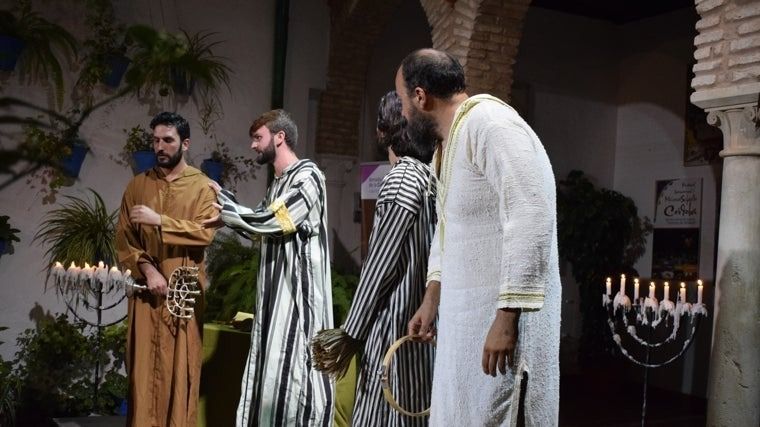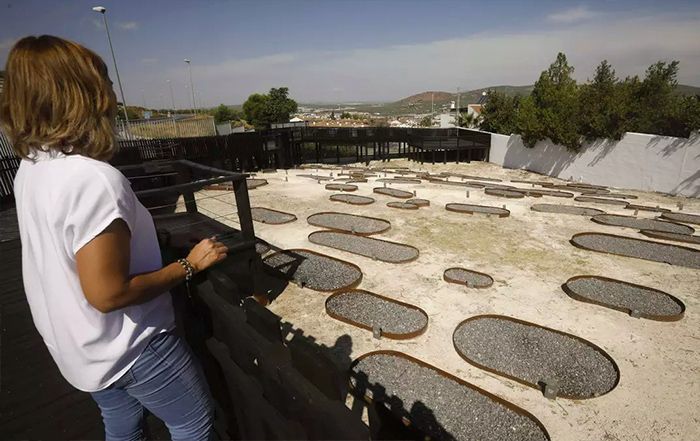It begins after sunset, when the limestone of Lucena turns the color of warm bread and the city’s hilltop air takes on a soft chill. A small group gathers at the entrance of the Jewish Necropolis, lanterns in hand. Their guide speaks quietly about gravestones recently unearthed after centuries of silence — Hebrew epitaphs, fragments of prayers, names of families who once transformed Lucena into the most vibrantly Jewish city in medieval Andalusia.
This nocturnal visit is the soul of Lucena’s Semana Sefardí, a week-long cultural celebration that turns the entire city into an open-air memory workshop. Concerts of Ladino music echo through courtyards; chefs reinterpret medieval Sephardic recipes; scholars discuss astronomy, medicine, and women’s roles in the Andalusian Jewish world. For a few days each year, Lucena becomes not a destination, but a return — to a past that still insists on being heard.
A City Born of Hebrew Letters
Lucena is unique among the cities of Sefarad. Known in Arabic sources as Eliossana and in Hebrew as Elí Hoshana, it was a majority-Jewish city during the 9th–12th centuries — a rarity in medieval Iberia. Governed by its own Jewish leaders, Lucena produced grammarians, legal scholars, and poets whose works traveled far beyond Andalusia.
The city’s cemetery, rediscovered in 2006 during construction, revealed more than three hundred graves, making it one of the largest and best-preserved Jewish necropolises in Spain. The site functions today as a kind of open archive: carved stones preserve names, dates, and formulas of memory that speak plainly about the social sophistication of a once-autonomous community. That discovery is the reason Lucena still calls itself La Perla de Sefarad.
The Singular Experience: Lucena’s Semana Sefardí
The Semana Sefardí de Lucena (Sephardic Week) is not folklorish pageantry; it is a deliberate cultural programme that balances scholarly rigor with sensory immediacy.
Night Visits to the Jewish Necropolis: Experts and archaeologists guide visitors through the cemetery by soft spotlights, reading Hebrew inscriptions aloud and explaining burial customs that connect medieval ritual to present-day memory. These visits are intentionally intimate and often sell out; booking ahead is essential.
Sephardic Music Concerts: Ladino romances and Mediterranean repertoires are performed in cloistered courtyards and small theaters where acoustic warmth turns voice into testimony. The music is both elegy and celebration.
Historical Routes & Storytelling: Walking tours such as “Lucena Judía: Ciudad de los Poetas” and “Las Mujeres de Sefarad” trace the city’s intellectual and domestic geographies, stopping at workshops, old facades, and the discreet sites that anchor legend to place.
Sephardic Gastronomy Sessions: Local chefs reinterpret ancestral recipes—honeyed eggplants, almond stews, citrus-perfumed pastries—pairing them with Lucena olive-oil and regional wines. These tastings are laboratories of memory.
Astronomy Workshops: Drawing on Lucena’s medieval intellectual lineage, scholars demonstrate how Jewish calendrical science once used lunar observation; in clear nights participants can watch the same stars that guided medieval scholars.
Semana Sefardí programs usually take place in September. Exact dates and event details vary year to year, so consult the municipal tourism pages and the Red de Juderías listing. Advance booking is crucial for necropolis visits and popular concerts.
 Beyond the Festival: What to See in Lucena
Beyond the Festival: What to See in Lucena
The Jewish Necropolis (Necrópolis Judía). The archaeological site is Lucena’s crown jewel: an unexpectedly large cemetery whose excavation has rewritten parts of Andalusian Jewish history. Visits here are solemn, illuminating, and carefully managed.
Castillo del Moral & Archaeological Museum. Explore the fortress and its exhibits to see how Lucena’s Jewish life fit within broader urban and regional contexts.
Barrio de Santiago. The area associated with the old Jewish quarter offers narrow lanes, artisan façades, and domestic atmospheres that reward slow wandering.
Iglesia de San Mateo. A late Gothic and Renaissance church whose ornamentation and civic placement reveal the city’s medieval transformations.

Hidden Corners and Living Culture
Lucena’s pleasures are often subtle: the golden hush of the Patio del Castillo del Moral at dusk; family workshops where pottery and woodcraft continue with near-medieval techniques; olive-oil tastings that recall Jewish-Andalusian culinary links. The city is small enough to move through by foot, and hospitable enough to invite lingering conversations in tapas bars and cafés.
As an active member of the Red de Juderías – Caminos de Sefarad, Lucena participates in preservation projects, educational programs, and the RASGO tourist initiative, which bundles cultural programming, certified guides, and hospitality standards to make heritage accessible without flattening nuance. The Semana Sefardí is among the network’s most effective local expressions of heritage as living culture.









